The day dawns with beautiful skies and Christi and I can’t wait to begin exploring the area beginning with Villa de Leyva, then Raquira, and if there’s enough time, the Monasterio de la Candelaria. After a complimentary breakfast at the Posada de San Antonio, we walk the cobbled streets of colonial Villa de Leyva. The Plaza Mayor is a vast open space with little development. The east is the main church, Iglesia Parroquial, while the other three sides are cafes, hotels, and museums.
Much like the rest of Colombia, the town is very clean, the people are very friendly and no one hassles us. It’s great. There are many dogs wandering around, but the townsfolk appear to take care of them (and we helped by feeding one last night). The only blight as far as I’m concerned is the abundance of vehicles, which clog the narrow streets. We poke around the back streets of Villa de Leyva all morning, until the rain returns.
In the afternoon (with the deluge continuing) we ask our guide, Hasiento, to take us to Raquira, the City of Pots. He clearly has never been to this artisanal mountain community before because he stops repeatedly to ask for directions. Raquira truly is a one street town that opens into a picturesque square. The most appealing aspect of the place is the brightly colored buildings, which make the town very warm and welcoming despite the rainstorm. As we huddle out of the rain amid some of the stores that face the plaza, Christi acquires a new friend, a local dog who wants a cuddle. Meantime, I persuade one of the local indigenous women, a Muisca to allow me to photograph her. With little improvement in the weather, we move to more comfortable accommodation, a nearby and very eclectic restaurant, which boasts chairs in the shape of crosses and large bug figures covering the ceiling. It was an odd place to watch the world go by. Raquira is actually the pottery capital of Colombia and every kind of tourist trinket is available, including clay pots of every dimension and any number of cute figures, although the slutty pigs do push the concept of good taste to the limit. Even the church is brightly painted, while clay figures – agricultural to religious line the square. Under thunderous clouds and diminishing light I run around and photograph whatever I can.
The next stop is the even more remote Monasterio de la Candelaria – another place that wows us and Hasiento. The monastery will close in 30 minutes, so we get the whistle-stop tour in high-speed Spanish. We understand about 25%, which isn’t bad. In addition to the monastery, itself, there are pretty gardens, a library with some very large books, a museum of animals, money and fossils, and lots of original artwork. Our guide allows me to photograph everything (despite the no photography signs!). The monastery was founded in 1597 and completed in 1660. The monk in charge supposedly lived to be 105.
Back in town, Christi and I eat dinner (trout and pork) at the Lonely Planet recommended Antique restaurant. We virtually have the place to ourselves, so maybe the backpackers go elsewhere! Live music was also provided and the singer serenaded us with the lovely Guantanamera! Finish our meal in front of a roaring fire. De-lightful.
Blog post by Roderick Phillips, author of Weary Heart – a gut-wrenching, heart-wrenching, laugh-wrenching tale.

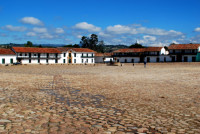
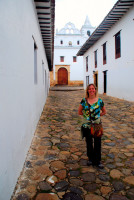
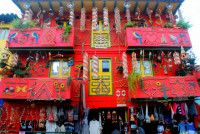
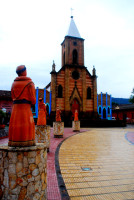
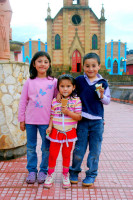
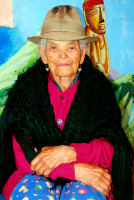
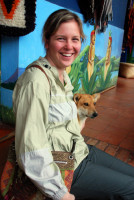
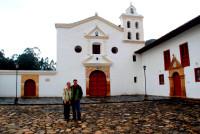
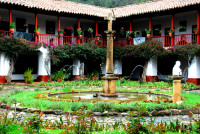
Speak Your Mind